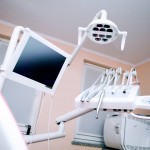
Dental caries remains a significant public health problem and its management requires the removal of carious lesions. Traditionally this has been accomplished using rotary instruments which have disadvantages included anxiety, discomfort and excessive removal leading to pulpal damage and death. As a result alternative management techniques including stepwise, partial, or no dentinal caries removal, chemo-mechanical removal, air-abrasion, sono-abrasion, laser, and atraumatic restorative treatment (ART) have been advocated.
The aim of this review was to compare the effects of laser-based methods to conventional mechanical methods for removing dental caries in deciduous and permanent teeth.
Methods
Searches were conducted in the Cochrane Oral Health’s Trials Register, Cochrane Central Register of Controlled Trials (CENTRAL), Medline, Embase, ProQuest Dissertations and Theses, Zetoc (conference proceedings), ISIWeb of Knowledge (conference proceedings), the US National Institutes of Health Ongoing Trials Register and the World Health Organization International Clinical Trials Registry Platform regardless of language or publication status (published, unpublished and ongoing).
Randomised controlled trials (RCTs), split-mouth trials and cluster-randomised trials comparing laser therapy to drill ablation of caries in patients of any age were considered. The primary outcomes were caries removal and episodes of pain during and after treatment. Two reviewers independently selected studies, abstracted data and assessed risk of bias using the Cochrane tool. Standard Cochrane methodological approaches were used for the analysis.
Results
- 9 RCTs ( 6 split mouth,3 parallel) involving a total of 662 patients were included.
- 4 trials involved children only, 4 adults only and one children and adolescents.
- The trials had small sample sizes and were either a unclear or high risk of bias.
- 6 trials used Er:YAG(erbium-doped yttrium aluminium garnet) lasers, 2 used Er,Cr:YSGG(erbium, chromium: yttrium-scandium-gallium-garnet) lasers, and one used Nd:YAG (neodymium-doped yttrium aluminium garnet) laser.
- There was insufficient evidence to suggest that either lasers or drill were better at caries removal (risk ratio (RR) = 1.00, (95%CI; 0.99 to 1.01) [2 studies; 256 treated caries, low-quality evidence}.
- The incidence of moderate or high pain was greater in the drill group compared to the laser group, RR= 0.40 (95%CI; 0.28 to 0.57) [2 studies; 143 participants]
- The need for anaesthesia was significantly higher in the drill group than in the laser group, RR= 0.25 (95%CI; 0.10 to 0.65) [3 studies; 217 children/adolescents].
- For marginal integrity of restoration, there was no evidence of a difference between laser and drill comparisons evaluated at
- 6 months, RR= 1.00 (95%CI; 0.21 to 4.78) 3 studies,
- 1 year, RR= 1.59 (95%CI; 0.34 to 7.38) 2 studies
- 2 years, RR= 1.00 (95%CI; 0.21 to 4.74) 1 study.
- There was no evidence of a difference for durability of restoration between laser therapy or drill at
- 6 months, RR= 2.40 (95%CI; 0.65 to 8.77) 4 studies,
- 1 year RR= 1.40 (95%CI; 0.29 to 6.78) 2 studies,
- 2 years RR= 0.50 (95%CI; 0.02 to14.60) 1 study.
- Only two trials investigated the recurrence of caries, but no events occurred during 6 months’ follow-up.
- There was insufficient evidence of a difference between laser or drill in terms of pulpal inflammation or necrosis at
- 1 week, RR= 1.51 (95%CI; 0.26 to 8.75)3 studies,
- 6 months RR= 0.99 (95%CI; 0.10 to 9.41) 2 studies.
Conclusions
The authors concluded: –
Given the low quality of the body of evidence, we concluded that evidence was insufficient to support the use of laser as an alternative to traditional drill therapy for caries removal. We found some evidence in favour of laser therapy for pain control, need of anaesthesia and patient discomfort, but, again, the body of evidence was of low quality. Additional well-designed, randomised trials investigating the most relevant outcomes are needed.
Comments
As is usual for Cochrane review an extensive search of databases and sound methodological approach was used through the review. The authors note that the number of participants included in the trials would have been sufficient to address the question of whether lasers were effective in removing caries yet few of the studies addressed this outcome. In addition only 5 of the 9 considered pain and only 4 looked at pulpal inflammation and necrosis. None of the included studies was considered to be al low risk of bias and a majority of the included studies were also funded by for profit companies. Because of the limited quality of the available evidence further studies are needed to evaluate the efficacy of lasers for caries removal. These studies need to consider appropriate outcomes measures and have sufficient follow up period to ensure both long and short terms outcomes can be assessed.
Links
Primary paper
Montedori A, Abraha I, Orso M, D’Errico PG, Pagano S, Lombardo G. Lasers for caries removal in deciduous and permanent teeth. Cochrane Database of Systematic Reviews 2016, Issue 9. Art. No.: CD010229. DOI: 10.1002/14651858.CD010229.pub2.
Other references

[…] post Lasers for caries removal: evidence insufficient to support their use […]
Lasers for caries removal: evidence insufficient to support their use https://t.co/q8CiKliesY
Lasers for caries removal: available evidence insufficient to support their use https://t.co/cPM3NKw8gx
Are lasers more effective at removing caries than a drill? https://t.co/cPM3NKw8gx
Evidence limited to support or refute difference between laser and drill treatment for caries removal https://t.co/cPM3NKw8gx
Laser for caries removal may have some advantage in limiting pain in children https://t.co/cPM3NKw8gx
Don’t miss-Lasers for caries removal: evidence insufficient to support their use https://t.co/cPM3NKw8gx